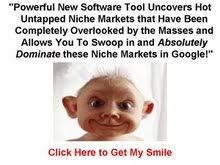|
The dirty little secrets of toilet paper
Think that a roll is a roll is a roll? The truth is that for years, toilet paper manufacturers have been selling less product and masking the shrinkage with hyperbole and hard-to-quantify claims. According to John T. Gourville, a marketing professor at Harvard Business School, they get away with it because consumers have a better grasp of how much an item costs than they do of the size it should be.
“They have in their minds that this toilet paper costs 79 cents and that one costs 89 cents,” he explains. “They’re not taking into account that one has fewer sheets.”
Once one company downsizes its products, others follow to avoid appearing more expensive. The maker of Angel Soft brags that its double roll has 60 percent more sheets than Charmin Ultra’s double roll. Still, those brands have many sizes, and counting sheets isn’t the only way to determine value—sheet size and thickness are also factors.
Consumer Reports contacted some customer-service representatives to find out what’s behind all the shrinkage and received a variety of explanations. Many suggested that their products had become so good that consumers actually need less of it.
A customer rep for Kimberly-Clark, maker of Cottonelle and Scott, told us that the downsizing was a marketing decision in response to rising costs for manufacturing and distribution. A follow-up statement said that product innovations yielded “better, stronger tissue, so that you need fewer sheets to get the job done.”
Procter & Gamble’s customer rep told us that reducing the number of sheets actually enabled the company to improve the quality of its flagship Charmin TP. The newer version is more flexible than previous ones, the rep said, and consumers should need much less.
Costco’s decision to trim its Kirkland Signature multipacks from 36 to 30 rolls was also explained as a less-is-more approach. A customer rep said that the company took out the six rolls to provide a better product, and that the toilet paper was actually thicker than it was before.
Manufacturers have also boosted their brand offerings to include not just single and double rolls but “mega,” “triple,” and “jumbo” variations, and other sizes. That makes comparing products even more confusing.
Some rolls are so bulky they may not even fit their bathroom enclosures, especially the ones in older homes. Not to worry, say the makers of Charmin. The brand’s mega rolls come with a money-back guarantee if they don’t fit. So be sure to hold on to your receipt and the package’s UPC code just in case you need to claim your refund.
Our advice: Don’t flush money down the drain. Find a brand you like and stock up when it’s on sale. Check our toilet paper buying guide for more.
Sheet counts then and now
Since 2009, Consumer Reports has tested bathroom tissue multiple times. And during that span, many manufacturers have shrunk the size of their rolls. To gauge the difference, we looked at nine current products, comparing the number of sheets per roll and the size of the sheets with previous versions. We used a so-called double roll, the most popular size, as our benchmark in most cases. Be aware that some brands, such as Kirkland Signature, downsize by decreasing the number of rolls per package.

Angel Soft roll call
As companies shave sheets, they’re expanding product lines. The king of line extensions is Angel Soft. According to its manufacturer, Georgia-Pacific, there are seven roll sizes, from 132 to 528 sheets. (Six are pictured here.) The reason for all that choice? According to a customer-service representative, they’re just different price points. But John T. Gourville, a professor of marketing at Harvard Business School, says it’s an effort to corner the market. “One issue is shelf space,” he points out. “By having a proliferation of sizes, you increase the likelihood that a consumer randomly buying toilet paper or shampoo will buy your brand. And being a good-selling brand, you can command more shelf space and take it away from a competitor.”
 Beware of wipes Beware of wipes
The packaging may say that wipes, those toilet-paper supplements, are flushable or safe for sewers and septic tanks. But after testing, we beg to differ. It took at least 10 minutes for the wipes we tested to break down into small pieces in our mixer filled with water, which provides more churning than waste pipes. When we left the wipes in water overnight, some disintegrated, some didn’t.
The bottom line. Don’t use your toilet as a wastebasket. Toss used wipes into an actual garbage can. The same advice holds true for tissues and paper towels.

This article also appeared in the October 2015 issue of Consumer Reports magazine.
Consumer Reports has no relationship with any advertisers on this website. Copyright © 2006-2015 Consumers Union of U.S.
|














